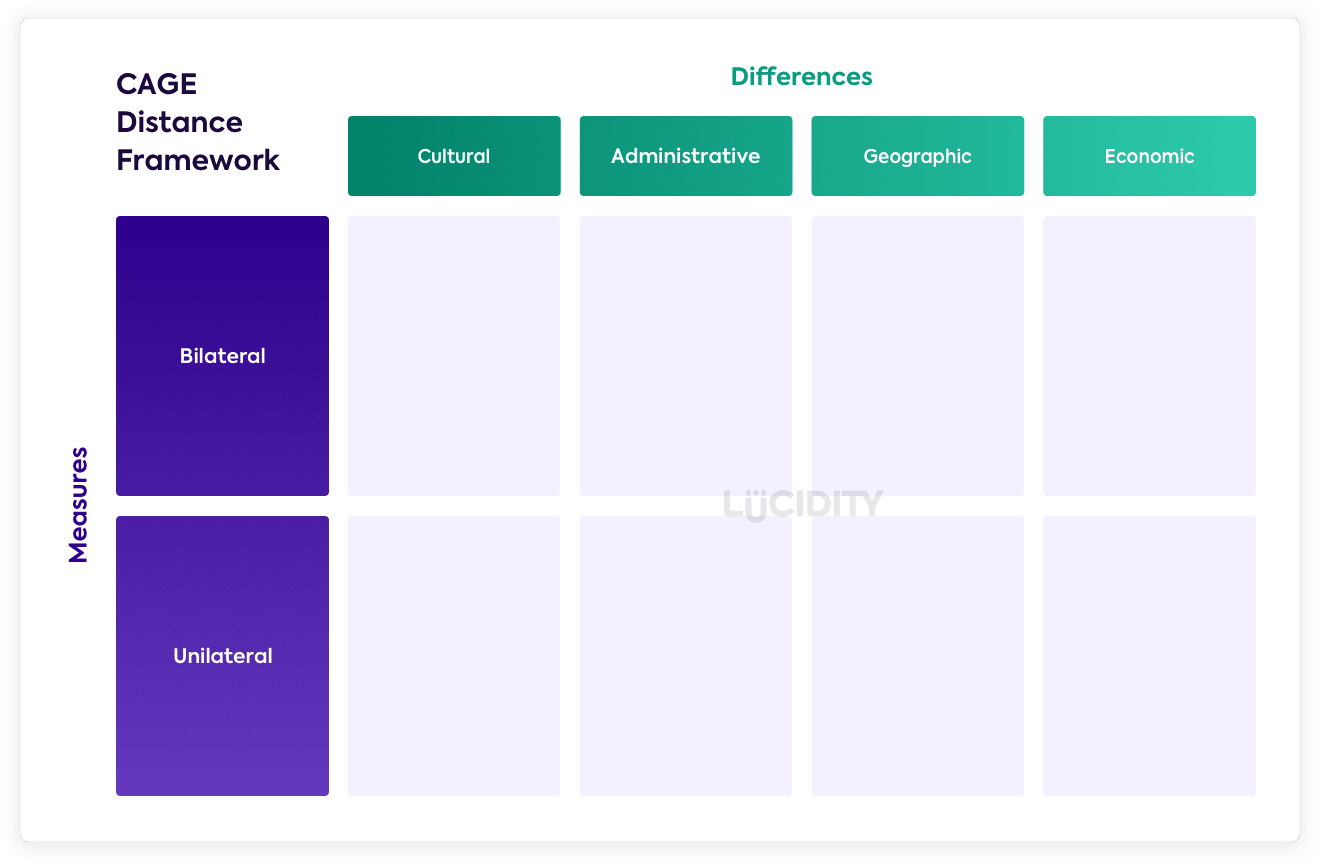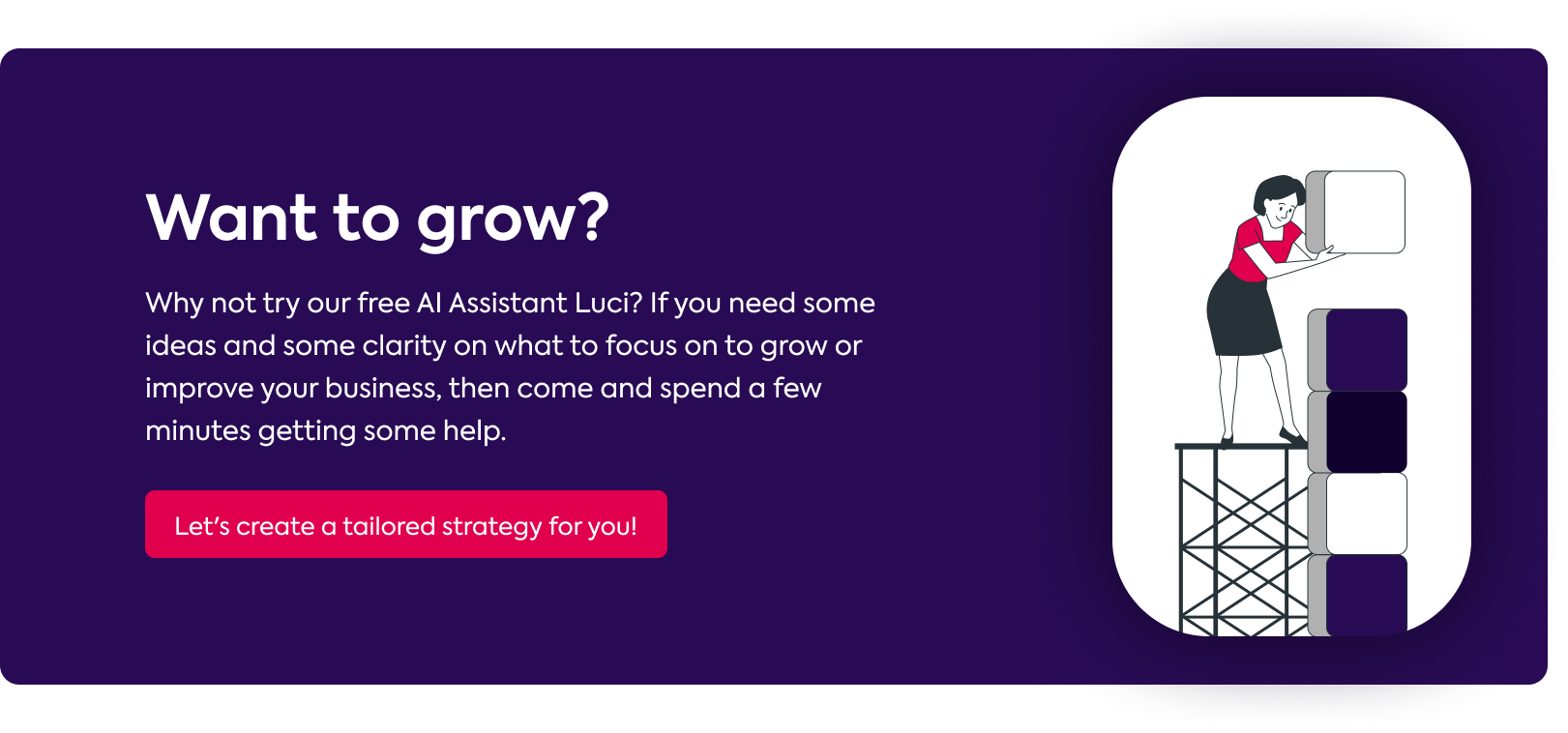Growth for businesses often means expanding into different geographic territories. It can seem scary, difficult and full of challenges, and while that may be true, it can also be highly successful, enjoyable and be a key part of your growth.
So is a new country or region an opportunity or a threat?
We’re going to assume you’ve completed your External Analysis, meaning you’re aware of the current environment you operate in and have potentially selected a new market to enter. The next step is to start thinking about the factors of your new market.
And this is where the CAGE Distance framework can really help….
What is the CAGE Distance framework?
The CAGE Distance framework is a framework to capture essential information you need to consider when entering a new market and highlight how big a difference there is between what you currently do and what you will need to do. Commonly it’s a geographic market, but it can also apply to entering a different industry.
The CAGE Distance framework is based around 4 pillars:
- Cultural difference
- Administrative difference
- Geographic difference
- Economic difference
There are many examples of companies going into different markets and failing (see Nokia’s approach to the US in the 2000s) so the CAGE Distance framework can be a really effective way to ensure markets are analysed correctly. The more thought that’s put into the differences, the more companies can tailor, tweak and optimise their products and services for the greatest success.
Ultimately, it’s a framework to help international growth happen quicker!
What are some example cultural differences in a CAGE Distance framework?
Cultural differences can be really impactful and they are present across all countries – even ones that seem very similar, ones that speak the same language, or share the same history, can all have a multitude of different cultural attributes you should consider.
The cultural differences found in a CAGE Distance framework include:
- Different languages and dialects
- Different ethnicities and networks
- Different belief systems and religions
- Different online behaviour such as social networks or search engines
- Different values and social norms
- Different attitudes on issues
It’s important to consider how your own country is viewed within the market too, and what impact that will have on your market entry. Don’t ignore culture!
What are some example administrative differences in a CAGE Distance framework?
While often considered, the true impact of administrative details is not always realised when a business enters a new market. There is a lot to consider and early sight of these issues will save a lot of time (and margin!).
The administrative differences found in a CAGE Distance framework include:
- Colonial ties
- Trade agreements & policies
- Currency differences
- Political situation
Tip: Refer to aspects of your PESTLE Analysis for this area in particular.
What are example geographic differences in a CAGE Distance framework?
The geographic differences are often the easiest to identify. It’s the first aspect management teams conider and includes the tangible, physical differences between the two countries. The geographic differences found in a CAGE Distance framework include:
- Physical distance between home country and new market country
- Border structure (land or sea)
- Timezone differences
- Climate
- Disease differences
- Physical size of country and location of major cities
- Transport and communication ease
This area tends to be the easiest to solve with technology, but one that requires still thought and planning.
What are example economic differences in a CAGE Distance framework?
Clearly the economic differences will impact your success, and can have wide ranging consequences on your pricing, uptake and margins. Countries differ so dramatically in economic differences so it’s vital to consider. The economic differences in a CAGE Distance framework include:
- Country resources
- Rich and poor social divides
- Infrastructure
- Average income levels and country wealth
What are the advantages of the CAGE Distance framework?
CAGE Distance is a great framework to help plan entry to a market because:
- It forces consideration on a wide range of issues that can impact you
- It enables discussion to take advantage of the differences
- It’s comprehensive in the categories
- It works for all countries / markets
- It provides a clear look at practicalities of entering a geographic market
What are some of the limitations of CAGE Distance framework?
The main limitations are:
- It focuses on your entry and isn’t useful to deciding market size
- It requires a lot of research on the market so is not a quick framework to use
- Ideally you’d have a country expert in your session
- It’s focused on the country and not the industry or market
What tools work well with the CAGE Distance framework?
The CAGE framework works well with Porter’s Five Forces as a method for complete evaluation of a geographic marketplace and PESTLE.
Who invented the CAGE Distance framework?
The CAGE Distance framework was created by Pankaj Ghemawat, lobal Professor of Management and Strategy and Director of the Center for the Globalization of Education and Management at the Stern School of Business at New York University, and the Anselmo Rubiralta Professor of Global Strategy at IESE Business School – he knows his stuff!















